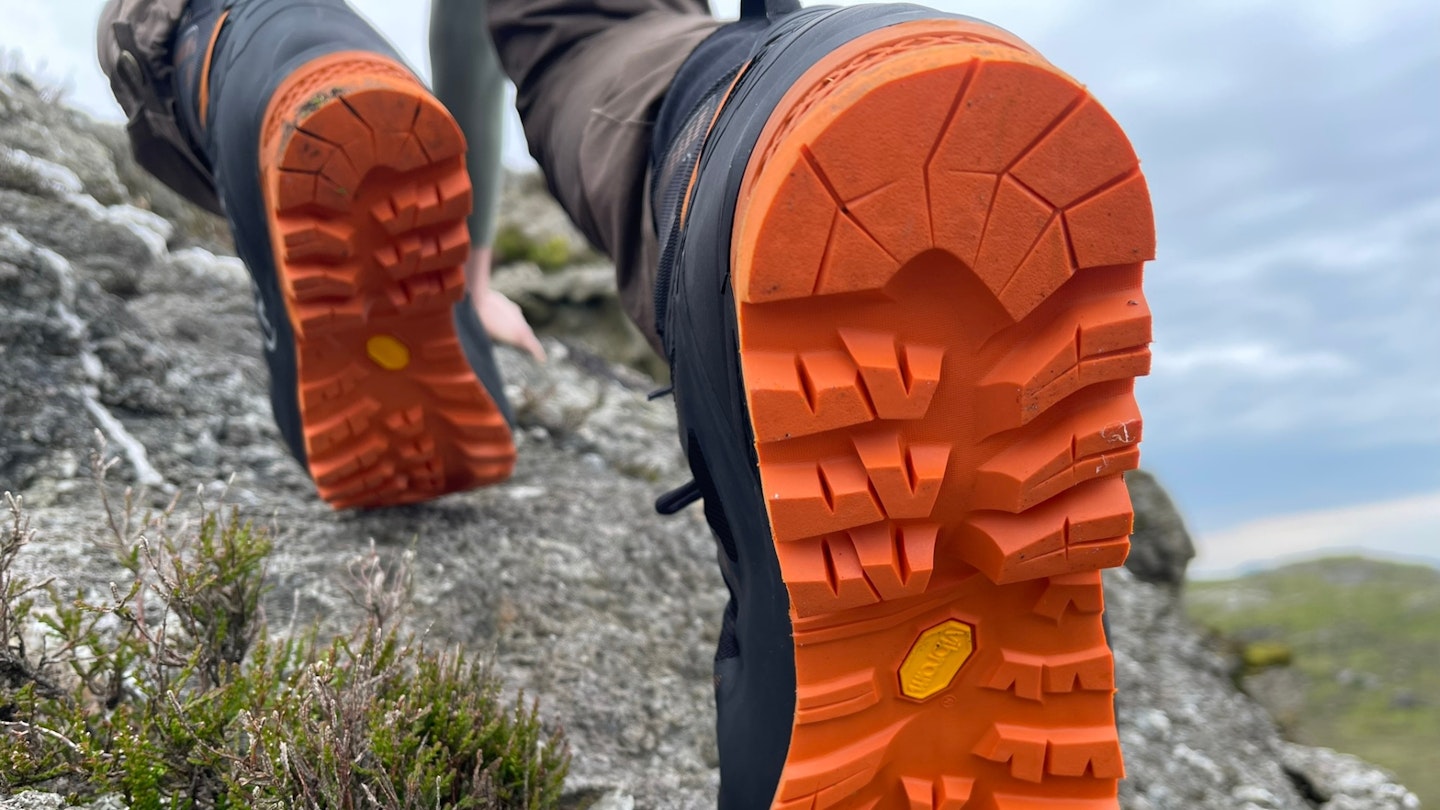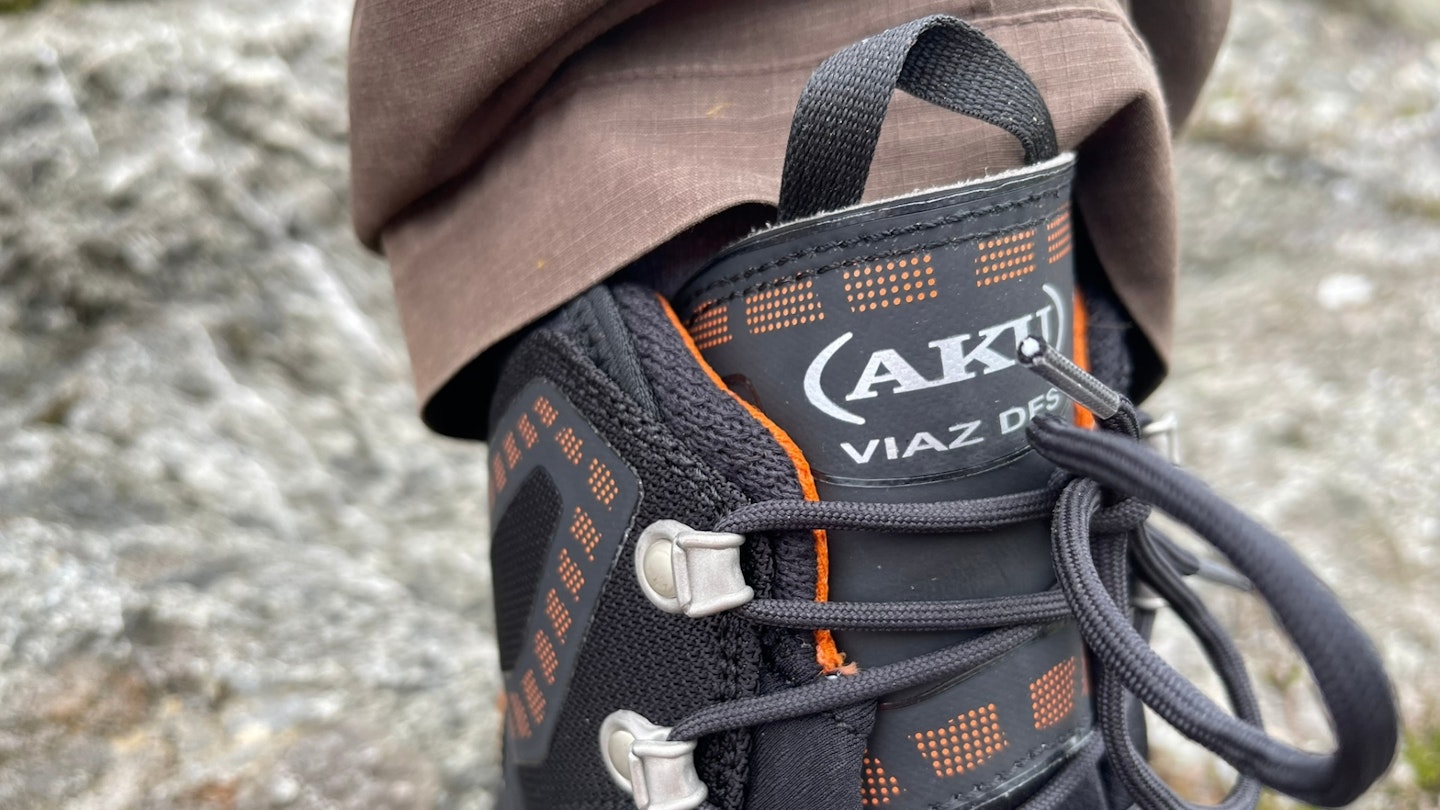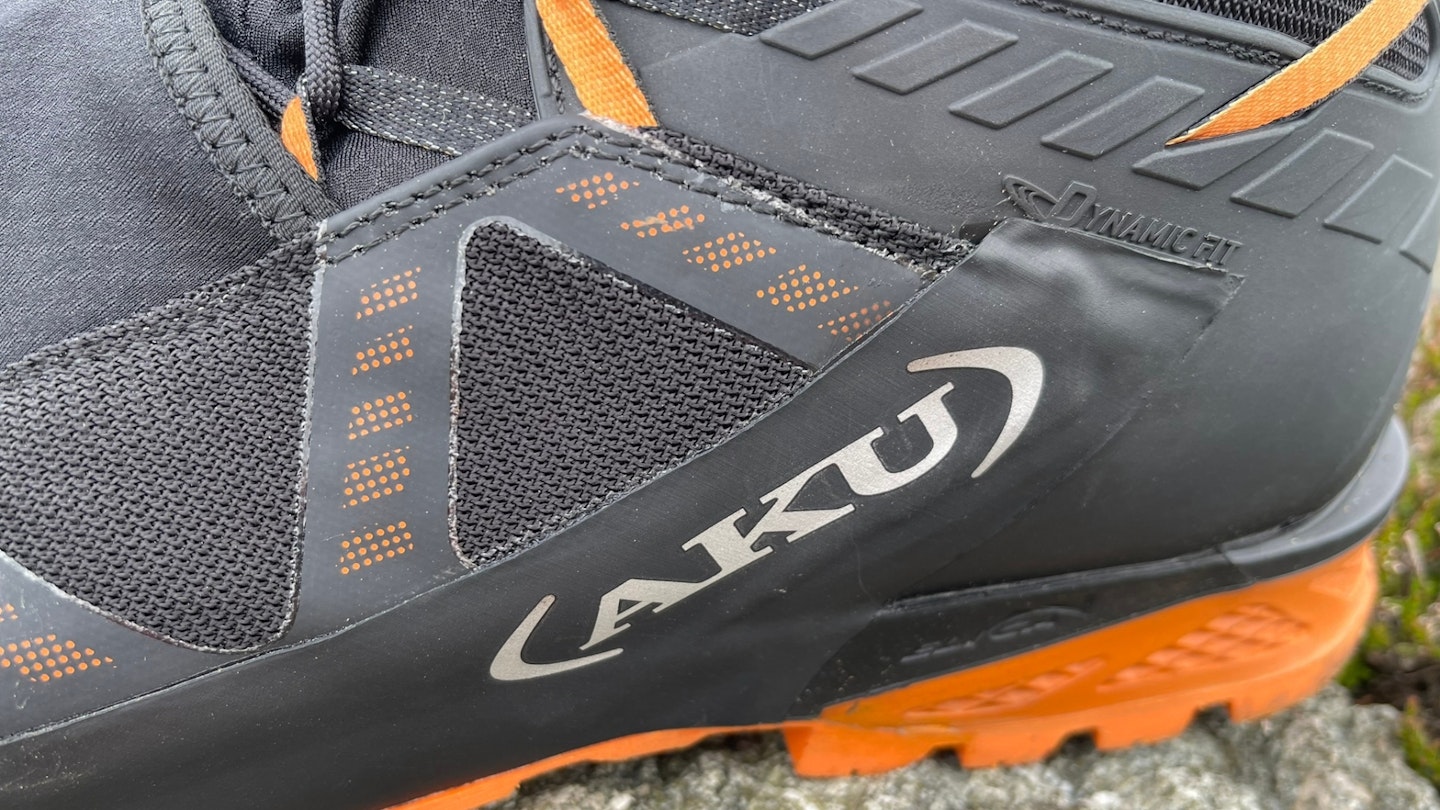It sometimes seems that the entire outdoor world is obsessed with going faster and lighter, from backpacking to mountaineering. But when it comes to climbing, that’s always been the ethos of the ‘Alpine style’. The Viaz DFS GTX is the latest lightweight but technical mountain boot from Italian brand AKU, and it sums up this approach perfectly.
This is a multipurpose boot designed for technical and fast-paced mountaineering, as well as demanding trekking trips and via ferratas (so they're a little more developed than your standard hiking boots). But how can it possibly do all these things?
Well, it’s a tricky task for sure, but AKU has incorporated plenty of tech to ensure this boot is fit for multiple purposes. This includes an adaptable precision fit at both the heel and toe, plus their proprietary ‘natural stride’ last and a new, thinner Vibram Litebase rubber outsole to shave valuable grams.
Pros
- Neat and precise feel
- Stable when scrambling
- Lightweight
Cons
- Limited cushioning
- Not the warmest
- Not as durable as some
| RRP: | £340 |
| Sizes: | Men’s UK 7-13, women’s UK 3.5-9 |
| Upper: | Air8000 textile and PU film overlay with rubber rand |
| Waterproof lining: | Gore-Tex Performance Comfort |
| Weight: | 658g / 23oz per boot (UK size 8) |
Design and features
Sitting at the more technical end of the AKU footwear range, the Viaz DFS is in many ways a lighter and more modern take on the brand's classic Tengu B2 mountain boot.
Reviving an older product line, it’s a Viaz in name only, since it has been upgraded with a plethora of fancy tech, from heel to toe.
Beginning from the back of the boot, the heel has a ‘dynamic fit’ system that basically consists of a webbing cord integrated into the upper heel. It’s linked to the lacing system so that it pulls everything in tight when you fasten the boot.
It’s similar in concept to Salewa’s excellent 3F cable heel system and works similarly. But I did find I had far less heel slip than in other stiff-soled AKU boots I've tested (particularly the Tengu), so I do think it’s a genuinely useful feature.
The lacing system itself is just as innovative. The boot lacks locking lace hooks, but instead it features AKU’s ‘dual fit system’.

In addition to the lacing at the top of the boot, there’s a separate secondary lower section that pulls in tight via a drawcord, hidden under an elasticated panel that runs across the top of the foot.
This does add a little bulk to this area of the boot though – not ideal if you’re trying to jam the boot into a small crack or crevice when climbing. The elastic panel also looks vulnerable to wear and tear.
The rest of the uppers are made from the brand’s highly breathable Air 8000 fabric, backed with a waterproof Gore-Tex liner. To improve abrasion resistance, this is overlaid with a lattice PU film, which is welded (heat-sealed) to the textile upper rather than stitched. You also get a wraparound full rubber rand with an extended heel cup.
The top section of the boot is very flexible, aiding ankle mobility and minimising overall weight. But it does mean that the tongue and ankle cuff lack a little padding.
The stretch gaiter and high flood height do a good job of preventing water ingress, though, making this a better choice than most mid-cut hybrids if you’re tackling loose rock, scree, ice and snow. You get practical pull tabs at both front and rear to help pull the boot on and off, too.
The sole unit is built on AKU’s Elica Natural Stride System to promote biodynamic efficiency. It sounds like marketing spin, but having tested plenty of AKU boots and trail shoes over the years, I rate them among the most consistently comfortable footwear on the market. The Viaz DFS is no exception.

The boot also features a midsole made from double density PU, with a shank made from nylon and carbon fibre embedded in die-cut EVA foam rubber. This provides sufficient stiffness for scrambling and enables use with a C1 or C2 crampon, thanks to a moulded heel insert at the back of the boot.
The outsole is a Vibram Croda Litebase unit. This is a thinner version of the classic Vibram sole, which reduces 30% of the overall sole weight through a reduction of the sole thickness by 50%.
According to the brand, there’s no reduction in traction or durability (though of course, they would say that). However, it has exceptionally deep lugs and a very undercut heel brake, traits that reminded me of La Sportiva’s excellent Aequilibrium boot.
I found it offered excellent grip on soft ground, but the blocky lugs also delivered reliable contact grip on rock, too.
Performance and comfort
In terms of sole flex, this was the stiffest of all the boots I tested in this category. I'd say it has the same level of stiffness as a traditional B2 mountain boot. This makes it extremely capable on steep ground, and you could scramble up to grade 3 in it easily.
In fact, it’s a boot that is well suited to tackling a multitude of climbing and mountaineering routes, including winter adventures with crampons fitted. Only a lack of insulation really limits its suitability for full-on winter mountaineering here in the UK.
The lightweight uppers combined with that Vibram Litebase sole unit ensure it feels light and agile, especially compared to a traditional B2 boot. There are hybrid rivals that are lighter still (like the Danner Crag Rat Evo, the Mammut Taiss Light Mid and the Salewa Ortles Light Mid), but none of those are as assured on technical terrain as the AKU boot.
The drawback of all these – including the Aku Viaz DFS – is that they’re unlikely to match the lifetime durability of a leather boot.

On test, I loved the neat and precise toe box, while the climbing zone under the toe makes it possible to edge on some very small ledges and holds.
Reassured by its stability, I scrambled across some of Snowdonia’s most famous ridges and climbed some of its trickier gullies with the assuredness of a mountain goat. Or at least, that’s what it felt like…
Overall fit is fairly slim, but you can tweak the volume to a certain extent thanks to that dual-lacing system. Still, it’s a close-fitting boot that is clearly built with precision and feel in mind.
In that regard it certainly delivers – though the thinner sole unit also feels pretty firm underfoot. Don’t expect too much in the way of plush cushioning.
Having said that, it’s still a comfortable boot, with no heel slip on test. The flexible ankle cuff also offers loads of mobility when scrambling, whether you’re negotiating big, blocky boulders or stemming across a gap.
Sustainability

The boots are Italian made and most of the raw materials are also sourced in Europe, which ensures that this boot has a lower carbon footprint than those manufactured in the Far East. European production also makes for easier monitoring and auditing of factory conditions and standards.
The brand doesn’t seem to have published a sustainability report since 2021, but the last data revealed that 98% of raw material suppliers comes from Europe, and 90% come from inside Italy.
More than 43% of their boot leather comes from LWG (Leather Working Group) certified tanneries. All stitching solvents have been replaced by water-based glues, and all packaging is made from recyclable material.
Price and competition

The closest rival that we’ve tested to the AKU Viaz DFS GTX is probably the Arc’teryx Acrux LT. Both boots are similar in terms of overall build, weight and price, and both have similar technical capabilities.
The Acrux is a neater-looking and more streamlined boot overall, but the AKU packs in more tech and features. Both are fairly unforgiving in terms of cushioning, and have precise, close fits.
If you need something more comfortable and accommodating but can sacrifice a bit of technical performance, then the frontrunner is the Hanwag Makra Pro. This also offers more durability thanks to its full suede leather construction. It’ll save you a bit of cash too.
So will other boots in this hybrid alpine scrambling/mountaineering category, like the Scarpa Zodiac and the La Sportiva Trango Tech. These are good all-rounders that lack the outright technical performance of the AKU Viaz but give you a bit more walking comfort and flex.
If you’re aiming to go as fast and light as possible, three of the lightest crampon-compatible boots on the market are the Mammut Taiss Light Mid GTX, the Salewa Ortles Light Powertex Mid and the Danner Crag Rat Evo.
Verdict
The AKU Viaz DFS GTX is a lightweight and precise modern mountain boot with superb technical ability on steep and tricky terrain, but it sacrifices winter warmth and a little cushioning.
See our list of the best winter boots for more options like this.
Shop this product
About the author

Matt Jones is a freelance journalist based in the heart of Snowdonia National Park, he’s a vastly experienced gear tester and self-confessed outdoor kit geek.
Matt’s been one of our main gear testers for the last couple of years and is the first person we call with any complicated kit queries that need in-depth and forensic analysis.






